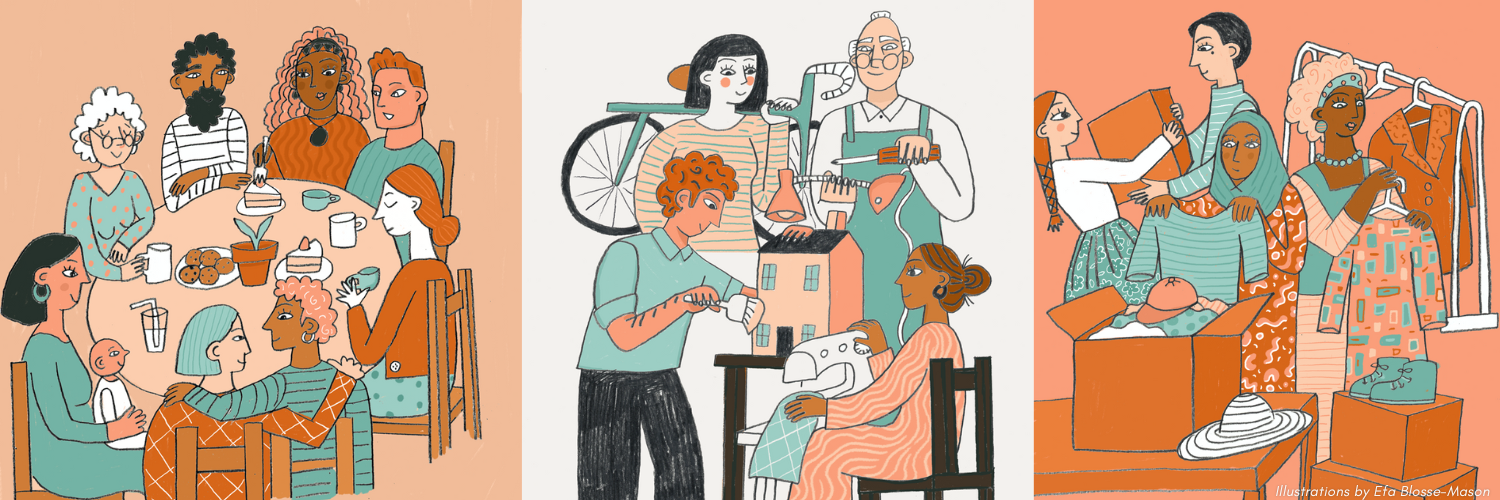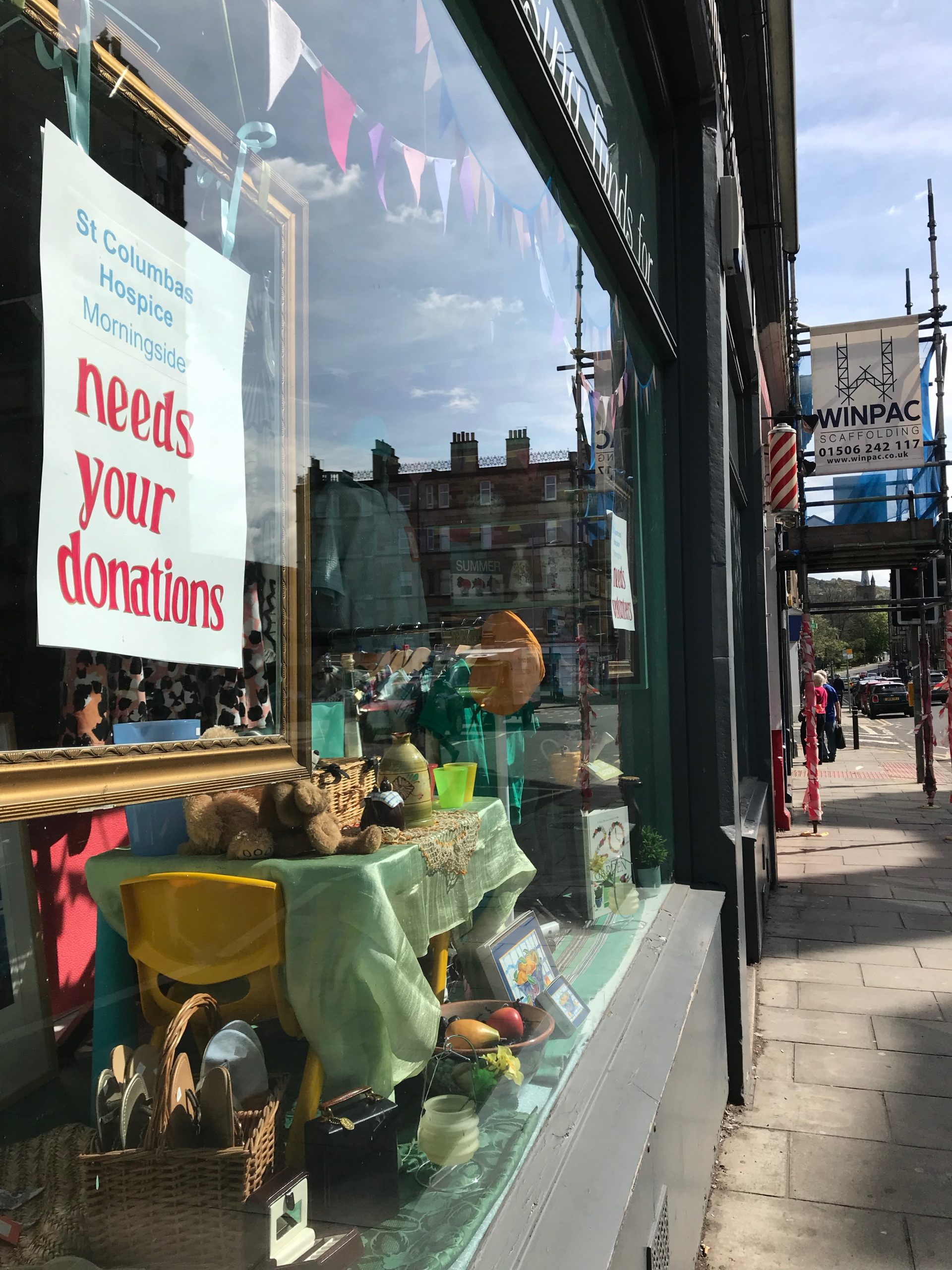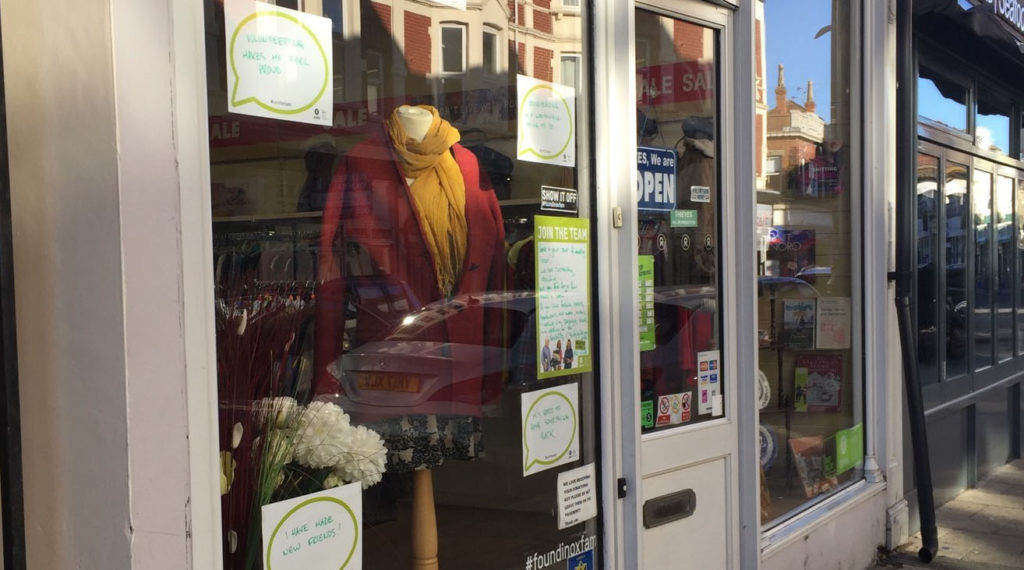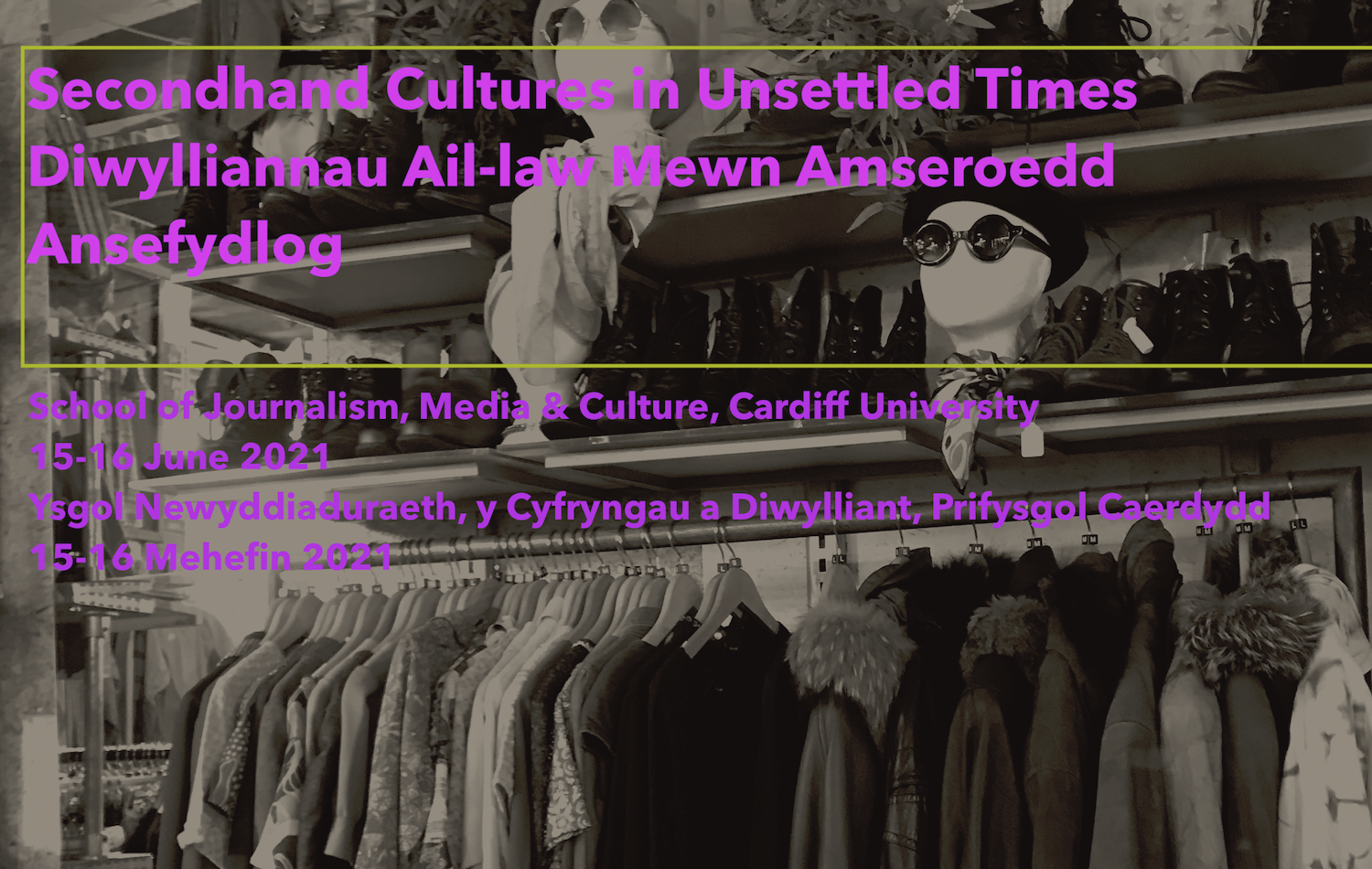By Brenda Mondragón Toledo
Interview – Brenda Mondragón Toledo with Diana Morales

BIO: Brenda Mondragón Toledo is a PhD student in Sociology at University College Cork. Currently exploring the faces of gender-based violence between Mexico and Ireland through the use of textile-making using Participatory Arts Research (PAR). She is part of a research group called ‘Seminario de Modas e Indumentaria en México’ from the Institute of Aesthetic Research at the UNAM in Mexico.
BIO: Diana Morales is an intern in Social Anthropology at Benemérita Universidad Autónoma de Puebla (BUAP).
In recent years, there has been a growing trend to buy second-hand clothes, resulting in new dynamics of commerce and consumption around the world. According to ThredUp, the price market of second-hand shops (in 2019) was 64 billion dollars worldwide. It is expected that the second-hand clothes market will be bigger than the fast fashion [1]—market by 2029. The increasing worrying about climate change has pushed consumers to question the current commercial dynamics of traditional fashion and has changed their way of shopping.
This trend has increased even more since the pandemic. On the one hand, the confinement has allowed consumers to clear out their closets. On the other hand, the use of social media and digital platforms to sell, buy, and exchange garments have also increased (FashionUnited, 2020[2]). The offered garments in second-hand shops may come directly from the seller’s closet and from the ‘tianguis’.
The ‘tianguis’ are open markets located in peripheral areas of the cities in Mexico. In these markets, merchants sell second-hand clothes brought illegally from the United States. They were traditionally sold to low-income families in the cities. This type of market exposes the connections between charity clothes donations in the United States and other countries in the Global North, resold in the Global South as ‘ropa de paca’ or second-hand clothes.
The sales of second-hand clothes are a form of income for many women in Mexico who sell them through social media such as Instagram. The logic under this form of consumption is around sustainability to recycle, reuse, and reducing.
To understand this better, I have interviewed Diana Morales. She uses and sells second-hand clothes in physical places and on social media.
Diana Morales is 24 years old, and she is from the Mexican state of Tlaxcala. She is an intern in Social Anthropology at Benemérita Universidad Autónoma de Puebla (BUAP), which forced her to move to Puebla during her college years. It was during this time that Diana came closer to second-hand clothes. Four years ago, approximately, she started buying clothes at the ‘tianguis’. In the following interview, Diana will tell us about this form of consumption and what it means to her.
How did you get close to second-hand clothing?
Diana M.- When I arrived in Puebla, one of my friends used to go a lot to the ‘tianguis’ at San Bartolo to buy second-hand clothes, also known as ‘la paca’. She would tell me that the clothes were good and I could even find brands. I agreed to go because I didn’t have enough money to buy new clothes and wanted to see what I could find. I went for the first time in December. My parents gave me money for Christmas, so I decided to spend it in the ‘tianguis’. It was a magical experience because the clothes were very cool, they don’t repeat, and it was pretty cheap. No one in my family buys these clothes, and they were not very happy about my decision, but I started to say, ‘but what’s wrong with it?’
I still go to the shopping centre, but I see the clothes and I don’t like them anymore, or they seem very expensive to me.
How do online second-hand bazaars work?
Diana M.- Young women start selling their own old clothes. When they are done with their old belongings, they start going to the ‘tianguis’ to buy second-hand clothes and sell them on social media like Instagram.
There are mainly two stages within the bazaars:
When the girls start clearing out their closets, they start putting out shoes, jackets, everything. Those are the second-hand bazaars where there is a direct connection with the previous user of the clothes.
Later on, the girls start investing, so they go to the ‘tianguis’ for more clothes. When you go there, you have to fix it, wash it, iron it, and give it a better presentation to sell it.
You can’t really tell if you are buying her old clothes or not unless you see her shopping at the ‘tianguis’.
Among the garments, you can find clothes from 10 pesos (50c) in good conditions but after a reasonable search. They are extended tables or extended pieces of wood where all the clothes are huddled. When the merchants arrive, they do accommodate the clothes, but it becomes a pile of clothes with the number of people that comes through the day. You have to arrive early and search, throw everything and pull and throw, pull and throw and so on. Many people have always gone there to buy their clothes, but lately, with the boom in bazaars, you see a lot of young women buying.
It is a whole process of searching and finding around 20 garments, and then it is a full day of washing and ironing. If it’s broken, you mend it. Another day you take photos and post them on your Instagram with a description, and you answer all the DMs. Later on, you have to organise deliveries, update your Instagram account, answer queries and set deliveries.
Sometimes you can find new garments because sometimes, you might find clothes with the tags on at the ‘tianguis’. The dynamic on Instagram is very different to the one at the physical bazaars. On Instagram, you have a previous production: the photos, the light, the background, description and everything to attract clients. Physical bazaars are a bit easier because you only need to hang the clothes. Still, you sell them much cheaper than selling them online. You don’t need to make an effort on the photos or constantly reply to possible clients by text.
Why is it essential to encourage the use of second-hand clothing?
Diana M.- I consider that the use of second-hand clothing is a form of criticising our ways of consumption within a capitalist society, mainly the fast-fashion industry. People start buying second-hand clothing in a more conscious way and only the things they really need. Now I have a small number of clothes, but I wear them all. Nowadays I only buy clothes that I really like and the other part of my closet is made out of clothes that my aunts and mum used to wear in the 80s and now they give them to me. I like it because I value differently every piece. After all, it belonged to someone in my family: it is nice clothing, and it is also like keeping something from them.
I have noticed a meaningful change since I started using second-hand clothes. I used to have a lot of clothes, and now I only have the essential. I only have what I am really going to wear and what I need.
Sometimes, it is hard to get rid of clothes you no longer wear and ask yourself, ‘what if I ever use them again?’ But it is part of the process of letting go of all of that, and it is a constant effort. I don’t want to fall anymore into consumerism, which has helped me not spend that much on clothes.
Coming into second-hand clothes implies a process of self-recognition. It is about how I like to see myself: which colours I like, what type of garments, which patterns on skirts and dresses, and getting closer to the ‘tianguis’ allows you this self-recognition, which helps you to be more conscious of what you wear.
Second-hand shopping has also become a space where young women can sell their garments and decide how to sell them, whether it is through bartering or for money. There are many bazaars on Facebook exclusively for young women to exchange clothes for things they need to get. Users will share the list of things they are willing to change their clothes for. They might stop wearing a jacket, so they exchange it for a pair of jeans, and this is what has allowed these spaces of exchange.
In the end, these are strategies of self-sufficiency that gives economic freedom to young women, which also allows them to bring an extra income to their families.
Recommended sources:
Sandoval Hernández, Efrén. (2019). Ropa de segunda mano: desigualdades entre el norte global y el sur global. Frontera norte, 31, e2062. Epub 05 de febrero de 2020.https://doi.org/10.33679/rfn.v1i1.2062
Norris, Lucy. (2012). Trade and Transformations of Secondhand Clothing: Introduction. Textile The Journal of Cloth and Culture. 10. 128-143. 10.2752/175183512X13315695424473.
Fashion Footprint Calculator: thredup.com/fashionfootprint
[1] https://www.thredup.com/resale/#resale-growth
[2] https://fashionunited.mx/noticias/moda/aumenta-la-venta-de-segunda-mano-debido-a-la-limpieza-de-armario-durante-la-cuarentena/2020061629167







